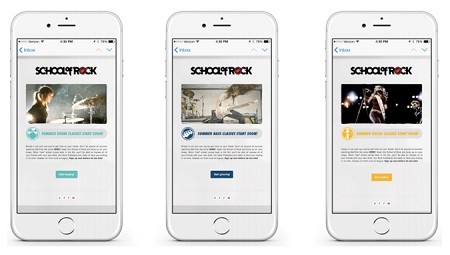In the noisy, crowded jungle of modern marketing, dynamic content is the ultra-adaptive chameleon: It changes itself based on demographics or preferences of your subscribers. Dynamic content can be tricky to spot, because when done right, the recipient just thinks your brand is really good at personalizing content.
Moreover, because 56% of people unsubscribe from emails due to content that's no longer relevant, personalized content is a modern marketer's most time-saving and effective tool for keeping subscribers engaged.
Dynamic content takes personalization to a whole new level, allowing marketers to target individual subscribers with different content—all from a single email. Dynamic content is also incredibly diverse: Uses include inserting your subscribers' name into subject lines and switching out images and full copy according to purchase history or interests.
The more personalized the content, the more effective the message.
Half of surveyed marketers in a recent study see content personalization as critical to their digital strategies, but 66% of marketers identify securing internal resources to execute personalized marketing programs as one of the biggest struggles they face. Dynamic content can help.
Here are three great reasons to start using dynamic content as a part of your own marketing strategy.
1. Tailored content experience
Marketers can now target individual subscribers with different content even when they're on the same mailing list. In this example, Nike's marketing team created and sent a single email, but the image and copy changed depending on whether a man or woman opened it.
See how that saves a ton of time? Rather than having to set up, design, and schedule separate emails for men and women, the Nike marketer just did it once, and the email automatically adapted for each recipient.
That approach could work for a wide expanse of industries. Just think: A pet store email could feature a kitten photo to cat lovers and a puppy to dog owners. An event host could send different content to previous attendees and new subscribers. Or, as in the case of our client, School of Rock, organizations could send corresponding images according to their attendees' interests.
During the sign-up process, School of Rock captures data on which instruments each subscriber plays. So when the school sends an invitation for summer programs, drummers see an image of someone playing the drums, pianists see someone playing keyboards, singers see a singer, etc.
Without dynamic content, this email strategy would be complicated and time-consuming, but with some simple copy and pasting of code, the School of Rock marketing team was able to create a customized experience for each subscriber. The result is an experience that makes email subscribers feel like the organization understands their interests, instilling a sense of familiarity and loyalty between them and the brand.
2. Ease of use
Dynamic content is incredibly adaptable—it works with whatever data fields you're capturing from your audience, whether that's location, purchase history, or spirit animal. Dynamic content is also easily trained; it only displays the content you tell it to in response to the data fields you assign.
Integrating email marketing software with other marketing and CRM tools like Shopify, Eventbrite, Salesforce, and Formstack creates an endless stream of customer data for you to use. If you have information on your customers' interests, location, and past purchases, why not tailor the best message possible for them? If you're not, you're missing out on revenue: 40% of consumers buy more from retailers who personalize the shopping experience across channels.
3. Major results in less time
And it works: Dynamic content can improve click-to-open rates by as much as 73% according to our friends at AVARI. Personalized promotional emails also lift transaction rates and revenue six times higher than non-personalized emails, according to Experian.
With the amount of time it saves—plus a 14% improvement in click-through rates and a 10% increase in conversions—the ROI on dynamic content is obvious. By creating a tailored experience for each subscriber, marketers can get major results, save boatloads of time, and have fun while doing it.






